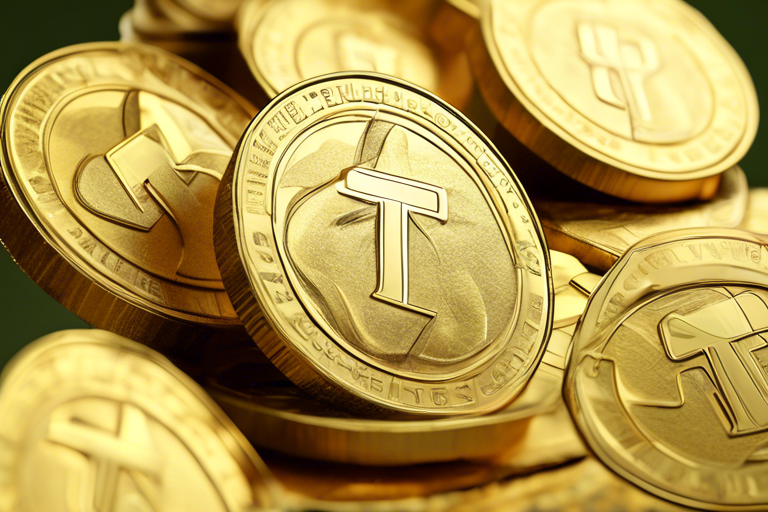The Launch of Tether’s new Gold-Collateralized Stablecoin: Alloy by Tether
Tether has introduced a new gold-collateralized stablecoin called Alloy by Tether, symbolized as aUSDT. While aUSDT remains a stablecoin pegged to the US dollar like USDT, its collateralization is unique as it is not tied to dollars.
The Collateralization in Gold of Tether
- Tether previously launched Tether Gold (XAUT), a stablecoin pegged to the value of gold, with each XAUT token equivalent to an ounce of gold.
- To maintain parity with gold, Tether reserves an ounce of gold for every XAUT token issued, ensuring it can always be exchanged for gold.
- Tether Gold’s value is guaranteed by its gold backing, making it both collateralized and exchangeable at par with gold.
The New Algorithmic Stablecoin: aUSDT
- aUSDT is over-collateralized in gold, with the total value of gold reserves exceeding the market value of all aUSDT tokens.
- Unlike Tether Gold, aUSDT is anchored to the US dollar’s price dynamics, ensuring price stability through market demand and supply.
- aUSDT is an algorithmic stablecoin pegged to the US dollar and backed by tokenized gold (XAUT).
The Tokens with Similar Names
- Alloy Tether (aUSDT) is distinct from other tokens with similar names like Aave USDT on crypto markets.
- It is crucial to differentiate between different tokens despite having similar tickers, as they present varying risk profiles.
- aUSDT and USDT differ, with aUSDT being an algorithmic stablecoin, potentially leading to higher price fluctuations compared to the traditional USDT.
The Details on Tether’s New Gold-Collateralized Stablecoin
- Tether has launched a subsection on its official site for Alloy by Tether (aUSDT) providing comprehensive details.
- Scam sites mimicking aUSDT have emerged, emphasizing the importance of verifying information on the official Tether website.
- aUSDT is a pegged asset designed to track specific reference assets like the US dollar, maintaining price stability through over-collateralization and liquidity pool support.
- Users creating new aUSDT tokens must provide a greater value of XAUT tokens as collateral, ensuring stability in the face of collateral value fluctuations.
The Role of MiCA
- Observers speculate that Tether’s launch of aUSDT as an algorithmic stablecoin tied to XAUT could be a response to the upcoming European crypto regulation, MiCA.
- Fiat-collateralized stablecoins face regulatory challenges in the EU, potentially urging Tether to explore options like aUSDT for compliance.
- aUSDT’s differentiation from e-money tokens like USDT could provide Tether with a regulatory advantage in the face of evolving regulations in the EU.
Hot Take: Tether’s Groundbreaking Stablecoin Venture
Stay updated on Tether’s innovative venture with the introduction of Alloy by Tether, aUSDT, a unique gold-collateralized stablecoin pegged to the US dollar, promising a new era of stability and resilience in the crypto market.





 By
By
 By
By
 By
By
 By
By
